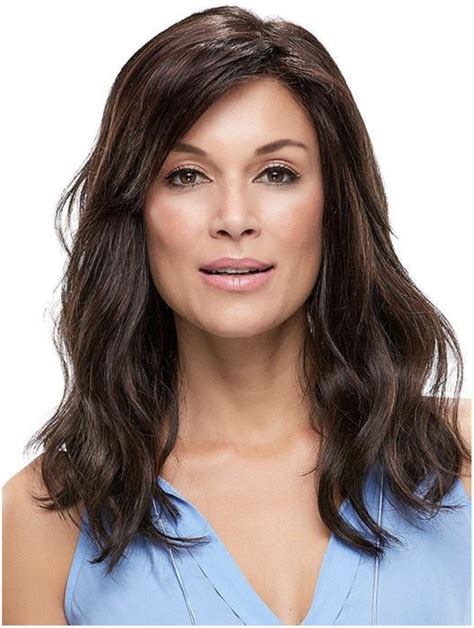Aging is a natural process, and with it comes changes in our appearance. One of the most noticeable changes is the thinning of hair. While some women embrace this change, others may prefer to cover up their hair loss with a wig.

If you’re an older woman considering wearing a wig, there are a few things you should keep in mind to find the perfect fit.
1. Choose the Right Wig Type
There are two main types of wigs: human hair wigs and synthetic wigs. Human hair wigs are more expensive than synthetic wigs, but they are also more natural-looking and durable. Synthetic wigs are less expensive and easier to care for, but they may not look as natural as human hair wigs.
2. Determine Your Head Size
To determine your head size, measure the circumference of your head around the widest part of your forehead and the nape of your neck. Use a soft tape measure and make sure it is snug but not too tight.
3. Consider Your Hair Color and Texture
When choosing a wig, it’s important to consider your natural hair color and texture. If you have dark hair, you’ll want to choose a wig that is the same color or a slightly lighter shade. If you have light hair, you can choose a wig that is the same color or a slightly darker shade.
In terms of texture, if you have straight hair, you’ll want to choose a wig that is also straight. If you have curly hair, you’ll want to choose a wig that is also curly.
4. Find the Right Cap Construction
There are different types of wig cap constructions, so it’s important to find the one that is most comfortable for you. The most common types of cap constructions are:
- Lace front wigs: Lace front wigs have a thin layer of lace around the hairline that creates the illusion of a natural scalp. This type of wig is very realistic, but it can also be more expensive.
- Monofilament wigs: Monofilament wigs are made with a sheer mesh material that is very lightweight and comfortable to wear. This type of wig is also very realistic, but it can be more delicate than other types of wigs.
- Weft wigs: Weft wigs are made with strips of hair that are sewn onto a cap. This type of wig is less expensive than lace front wigs and monofilament wigs, but it may not be as realistic.
5. Try on Different Wigs
Once you’ve considered all of the factors above, it’s time to start trying on different wigs. Visit a wig store or salon and try on a variety of wigs until you find one that you feel comfortable and confident in.
6. Care for Your Wig
Once you’ve found the perfect wig, it’s important to take care of it so that it lasts for as long as possible. Here are a few tips for caring for your wig:
- Store your wig properly. When you’re not wearing your wig, store it in a cool, dry place. Avoid storing your wig in plastic bags, as this can cause the hair to become frizzy.
- Wash your wig regularly. The frequency with which you need to wash your wig will depend on how often you wear it. However, most wigs should be washed every few weeks.
- Use the right products. When washing and styling your wig, use products that are specifically designed for wigs. Avoid using regular hair products, as these can damage the wig’s hair.
7. Get a professional consultation
If you’re not sure how to choose or care for a wig, you can get a professional consultation from a wig stylist. A wig stylist can help you find the perfect wig for your needs and can teach you how to care for it.
Conclusion
By following these tips, you can find the perfect wig that will help you look and feel your best.
